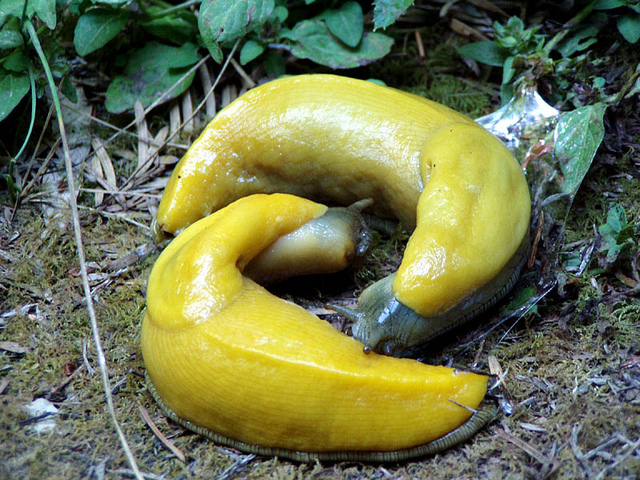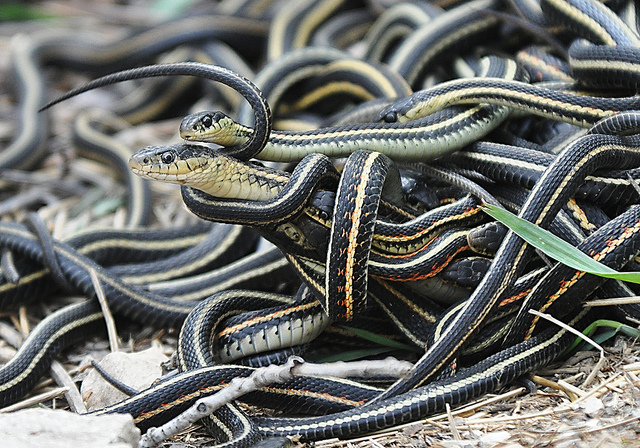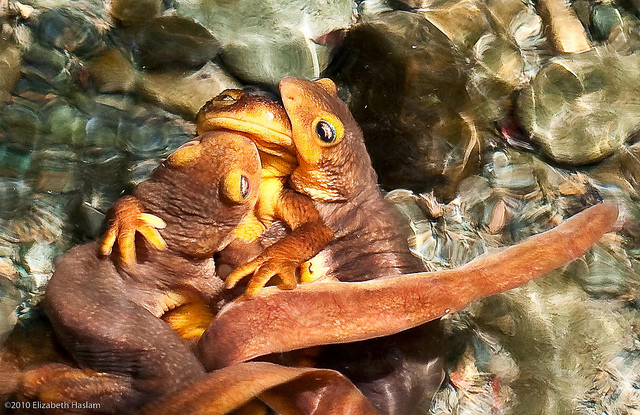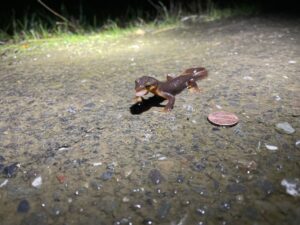It’s Valentine’s Day: the official day of love which may or may not lead to mating (depending, I guess, if you play your cards right). While Bay Area humans have some of their own oddball mating habits, some of our local species make ours look like the essence of piety.
Take, for example, banana slugs: hermaphrodites with unusually long sex organs. Their scientific name, Ariolimax dolichophallus, literally means “long penis.” An adult banana slug usually grows to be around six to eight inches. Its penis? Also six to eight inches. With these life size organs, the hermaphrodite banana slugs penetrate each other while mating. Did I mention that the penis comes out of the slug’s head? This can make the process a little complicated and sometimes one of the participants will get stuck, but fear not. The two mating slugs will take turns chewing on the stuck penis until it is free. As for the newly-castrated slug: the hermaphrodite is no longer and lives to be a female for the rest of her life.

Another slug hermaphrodite is the common garden snail. They have the same basic mating process as the banana slugs, but they have a complicated courting ritual to get to that point. The courting lasts anywhere from 15 minutes to six hours and consists of the snails circling each other, touching and biting of the lips and genitals. And this is where things get weird: hydraulic pressure begins to build up until a calcified “love dart” fires from one snail into its mate. When the mate responds by firing its own dart into the first snail, then the two begin to mate. Apparently, this is because a chemical signal on the dart makes it more likely for the snail to become fertilized with healthier sperm.
While a common garden snail’s sperm competes with each other, garter snakes compete in large groups of males to mate with one female. The female garter snake will release a sex hormone that drives the male garter snakes mad with “love” so that they all feel the need to fertilize her. This results in a huge, tangled ball of male garter snakes all vying for a chance to mate with the popular female. The big bonus to these mating balls? Warmth. Some male garter snakes will even secrete the female hormone to trick other males into cuddling around them, just to get warm.

Honey bees are quite the sneaky lovers. When a male honey bee mates with a female, his penis breaks off inside her in an attempt to allow no other males to mate with her, which doesn’t necessarily happen. A queen bee can mate with multiple drones in one flight, saving each of their sperm to fertilize her eggs throughout her life as she needs. As for the male? He dies, since his abdomen is ripped open from the loss of his sex organ, and because a life without his beloved reproductive organ is no longer worth living (as males in many species would vouch for).
Barnacles are a bit more lazy than the overactive honey bees: they have relatively long sex organs (up to eight times their size and the longest in the animal kingdom) and simply stretch out to find random fertile neighbors to mate with. They’re not picky with who they mate with, as long as they can reach.
Newts aren’t picky either. The males bulk up and get super manly and then deposit their sperm in a local pool, literally forming a gene pool for the females to gather whatever sperm they can.
Makes our “strange” human sex rituals seem not-so-strange anymore, doesn’t it?
Here’s more on newts, which happen to be in the height of mating season right now. Plan a trip to the UC Botanical Garden’s Japanese Pool for an up-close and personal look at all the love-making.





